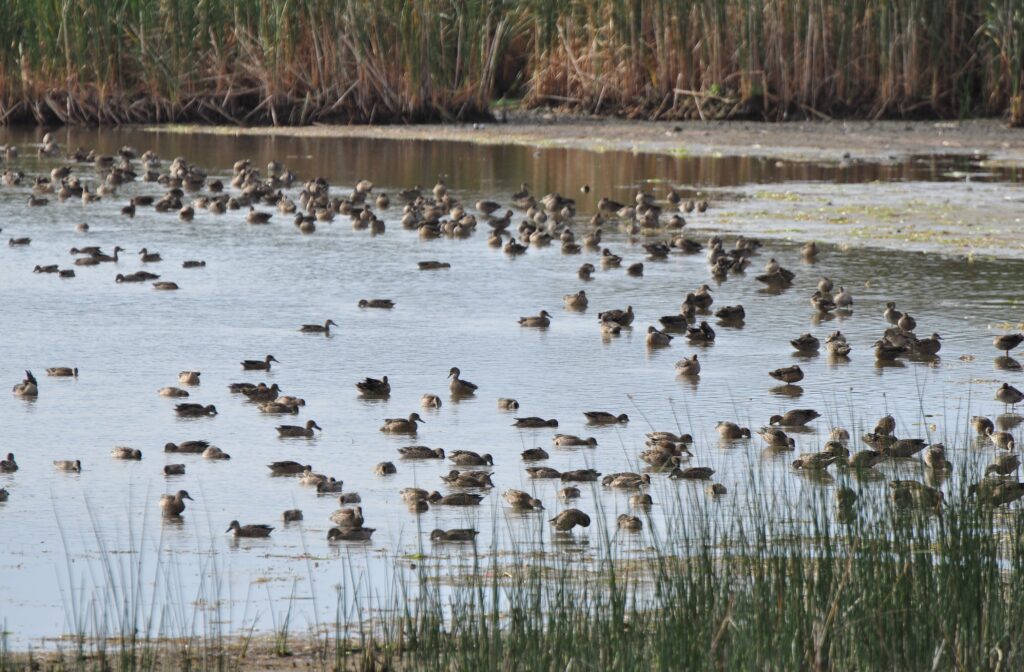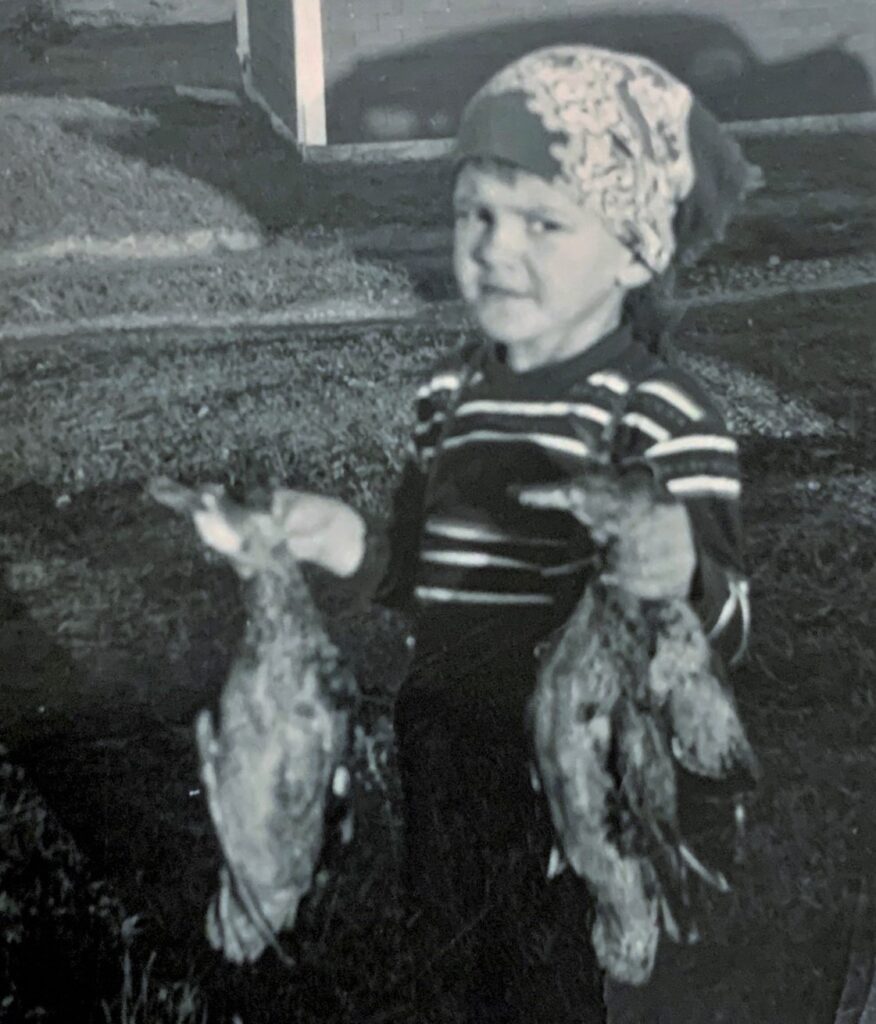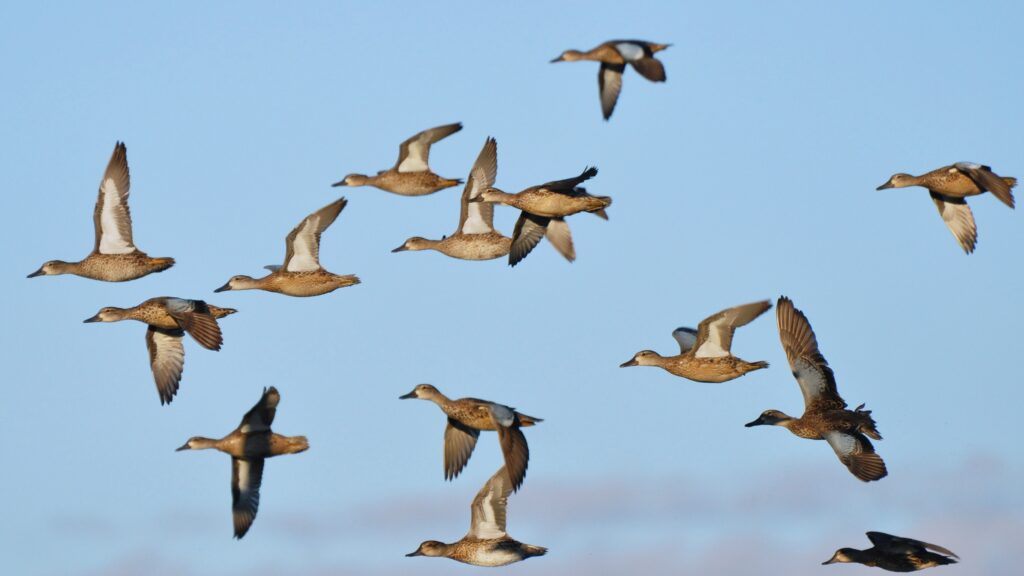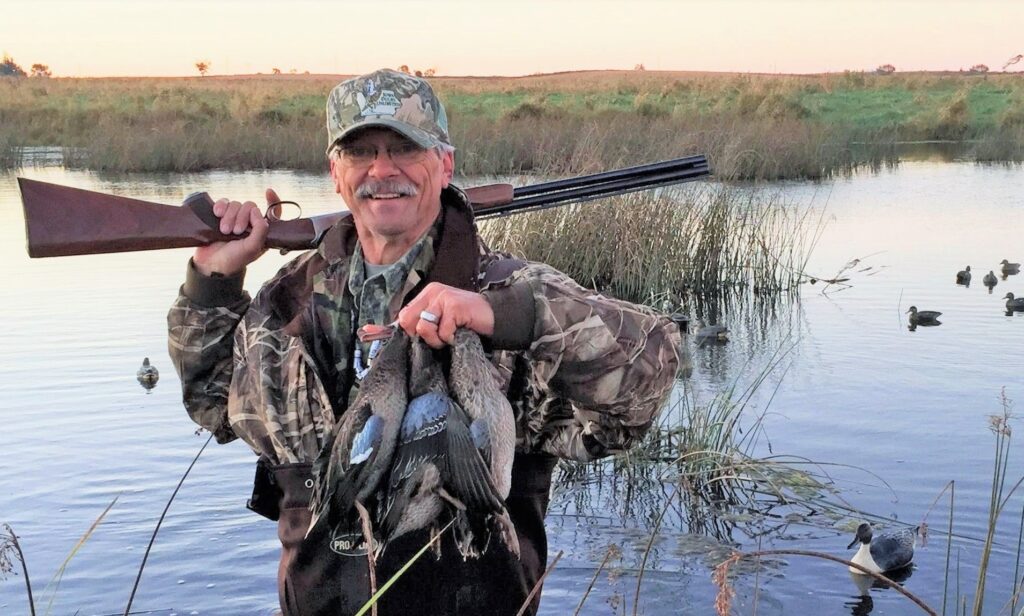Photography courtesy of Lowell Washburn, all rights reserved.
The slow-moving cold front that swept into Iowa during the second week of August offered some much-needed relief from the stifling heat and humidity of late summer. The temporary change of weather also provided a sharp reminder that fall hunting seasons are just around the corner.
For Iowa waterfowlers, the fall seasons begin with the September 1st opening of the annual special teal season. Initiated in 2014, Iowa’s bonus teal seasons represent the best change in waterfowl hunting regulations to occur in my lifetime – a recreational windfall offering sixteen continuous, back-to-back, sunrise to sunset, fun filled bonus days of waterfowl hunting that do not subtract so much as a single hour from the state’s regularly scheduled 60-day duck seasons. Hard to beat an outdoor gift like that.

I’ll be quick to admit my bias. My fascination with teal goes back to some of my earliest memories. The first wild ducks that I saw and actually got to handle were the blue-winged teal that my dad brought home from his early season hunts. As a toddler, I didn’t know that blue-wings were the first ducks to abandon their summer breeding areas to head south. I didn’t know that blue-wings traveled faster and farther down the flyways than any other duck. I didn’t know that most blue-wings would spend the winter in such faraway places as Central and South America. I knew nothing of the teal’s incredible speed and aerial agility.

What I did know, however, was that blue-winged teal were beautiful. Adorned with sky-blue shoulder patches, iridescent speculums, and an immaculate blend of tawny and chocolate brown plumage, they were a bird of endless wonder. From bill to tail, the species was a perfect work of art. Once I got my hands on a fresh teal, I would smooth and preen its gorgeous feathers over and over until dad would finally repo the bird in preparation for Sunday dinner.
Although exceedingly fleet, blue-winged teal generally fly at low level and, better yet, possess the irresistible urge to visit a well-placed spread of decoys. They are also prone to cycles of abundance which, when combined with the above-mentioned factors, is the reason why blue-wings are usually the very first species that a novice hunter brings to bag. I was no exception, downing my very first blue-wing during my very first duck hunt.

The outing began as a Friday night campout with my dad. And as a revved up 10-year-old, wanna be duck hunter, I don’t think I slept a single wink the entire night. All I could think about were the ducks.
At the approach of dawn, we headed downhill to a secluded backwater of the Winnebago River. Darkness was waning, and the autumn air had come alive with the whistle of wings and the nearby sound of splashing as groups of incoming ducks plopped into the shallow water. I was beside myself with excitement, and it seemed to take Dad forever to get our decoys on the water.
Once the wooden effigies were finally in place, a freshly cut bundle of leafy willow spears was fashioned into a blind. I had no more than settled into the hide when the first ducks appeared. They were blue-winged teal — on the deck and winging past at warp speed. But upon spotting our decoys, the flock hit the brakes, executed a sharp turn, and came scorching back toward the spread. Within seconds, the ducks — all 15 or 20 of them — were noisily splashing in among our balsa counterfeits.
Temporarily mesmerized, I remained as frozen as a granite statue. Snapping back to reality, I suddenly realized that here was an easy opportunity to collect my very first duck dinner. I made my move at the same instant the surprised teal made theirs. By the time I managed to shoulder my trusty .410 single shot, the birds were long gone. All that remained of my dream were several sets of converging ripples on the pond’s surface.
I felt like crying. Dad laughed, which only made matters worse, until I finally laughed too. But there was no time to dwell on past failures. More ducks quickly appeared and then more after that. The flocks kept coming and, despite being a complete greenhorn, I did eventually manage to bag my very first limit of blue-winged teal, but not before digging into my second box of ammo.
There have been a lot of duck hunting changes since that autumn day in 1959. There have been seasons of high water, low water, and no water. There have been long duck seasons and short. Good years and bad. Bag limits have ranged from a low of just three teal per day to as high as ten per day.

But despite all these dramatic contrasts, there have been a couple of never-changing absolutes. Today, the blue-winged teal remains as fast, beautiful, and fascinating as ever. And after all these years, my love for teal and for teal hunting has only grown deeper. Sixty-five seasons have passed since that first boyhood duck hunt. Amazingly, my anticipation for the impending sunrise has never diminished. I can still barely sleep a wink on the Friday night before Opening Day. All I can think about are the ducks.

 Susan Judkins Josten
Susan Judkins Josten Rudi Roeslein
Rudi Roeslein Elyssa McFarland
Elyssa McFarland Mark Langgin
Mark Langgin Adam Janke
Adam Janke Joe Henry
Joe Henry Sue Wilkinson
Sue Wilkinson Tom Cope
Tom Cope Kristin Ashenbrenner
Kristin Ashenbrenner Joe Wilkinson
Joe Wilkinson Dr. Tammy Mildenstein
Dr. Tammy Mildenstein Sean McMahon
Sean McMahon